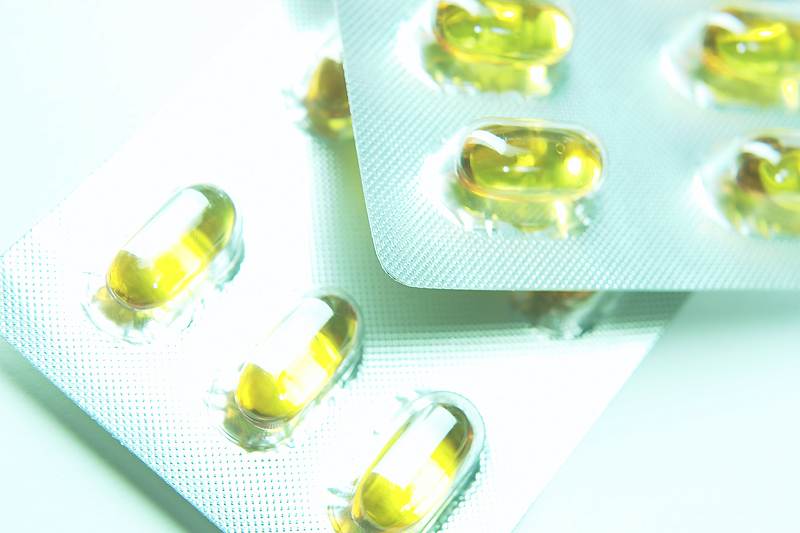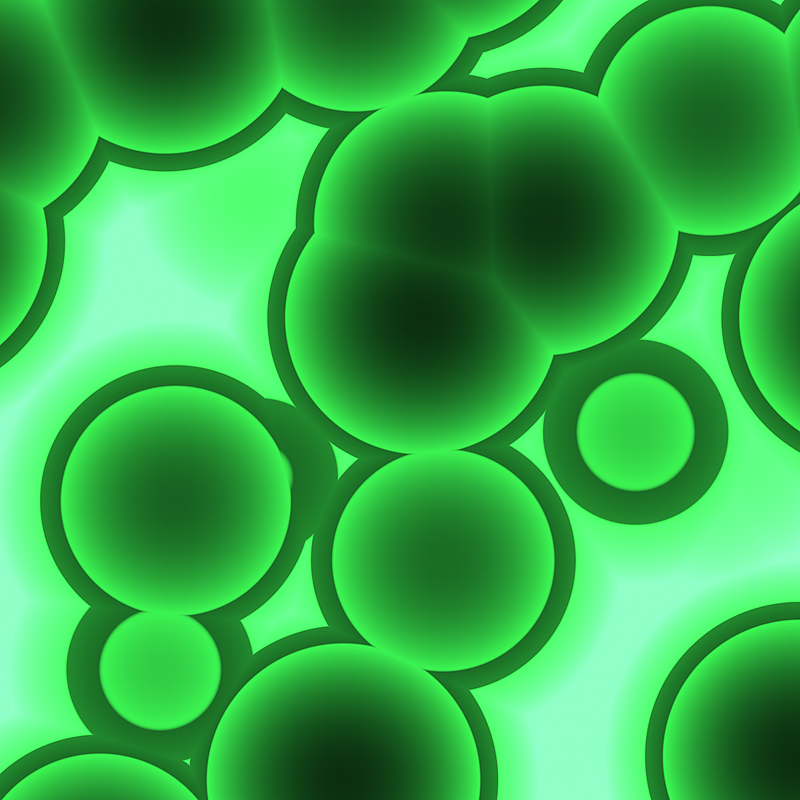Gamma Linolenic Acid (GLA)
Stimulates Master Hormones
Perhaps you have heard of GLA (gamma-linoleic
acid) and DHA (docosahexaenoic acid). Human breast milk is high in GLA,
probably due to the infant child’s need for brain-building fats. And
since many infants never gained the important nutritional benefits of
their mothers’ milk, they have been GLA-deficient for their entire lives.
The American diet of processed foods contains virtually no GLA. And low-carb
dieters are not getting any either, unless they specifically supplement
it.
GLA is the second fatty acid in the omega-6 family. It has 18 carbons
and three double bonds (with the
 first double bond positioned six
carbons from the end). The third fatty acid in the omega-6 family is dihomo-gamma-linolenic acid (DGLA) with 20 carbons and three double
bonds. Next comes arachidonic acid (AA) with 20 carbons and 4 double
bonds. The Series 1 prostaglandins are made out of DGLA and the Series 2
prostaglandins are made out of AA. Thus, GLA is an important transition
product for the production of these prostaglandins. first double bond positioned six
carbons from the end). The third fatty acid in the omega-6 family is dihomo-gamma-linolenic acid (DGLA) with 20 carbons and three double
bonds. Next comes arachidonic acid (AA) with 20 carbons and 4 double
bonds. The Series 1 prostaglandins are made out of DGLA and the Series 2
prostaglandins are made out of AA. Thus, GLA is an important transition
product for the production of these prostaglandins.
GLA as occurring in Bio-Algae Concentrates exhibit impressive immune
stimulating and boosting properties. GLA is not only known for
regulating blood sugar and providing important nutrients to the brain;
it also exhibits immune-boosting properties. In fact, according to Dr.
Hass, author of Staying Health With Nutrition, GLA has been shown to be
effective for the following health conditions:
- Cardiovascular
disease—anti-inflammatory effect; reducing platelet aggregation,
thereby reducing clotting; lowering blood pressure by decreasing
vessel tone; cholesterol-lowering effect.
- Arthritis (rheumatoid arthritis and
other inflammatory disorders) - anti-inflammatory effect; immune
support; correcting possible EFA and GLA deficiency.
- Skin disorders (eczema, acne,
dermatitis)—anti-inflammatory effect; EFA functions;
immune support.
Allergies, asthma - anti-inflammatory effect; EFA function; immune
support.
- Multiple sclerosis—nerve conduction;
correction of possible EFA and GLA deficiency; immune support;
decreased platelet aggregation; balancing prostaglandins.
Essentially, GLA helps support the immune
system through a variety of mechanisms, and its benefits go far beyond
mere immune system function. Many studies on the health effects of GLA
have been
 conducted, and they show stunning results for this beneficial
nutrient. In fact, in the 1980s, GLA was studied more intensively than
any other nutrient: About 200 clinical trials took place in university
hospitals and medical schools throughout the world. One of these
researcher, Dr. Horrobin states “that his studies have led him to
believe that a lack of essential fatty acids could turn out to be one of
the most common defects in human biochemistry and a significant factor
in many diseases”. Essential fatty acids are especially important in the
function of nerve, muscle, and immune systems, for when people lack the
proper balance, the neurological, endocrine, and immune systems are
shown to be adversely affected. conducted, and they show stunning results for this beneficial
nutrient. In fact, in the 1980s, GLA was studied more intensively than
any other nutrient: About 200 clinical trials took place in university
hospitals and medical schools throughout the world. One of these
researcher, Dr. Horrobin states “that his studies have led him to
believe that a lack of essential fatty acids could turn out to be one of
the most common defects in human biochemistry and a significant factor
in many diseases”. Essential fatty acids are especially important in the
function of nerve, muscle, and immune systems, for when people lack the
proper balance, the neurological, endocrine, and immune systems are
shown to be adversely affected.
GLA has proven to be effective in the treatment of many serious
diseases. Double-blind, placebo-controlled studies for atopic eczema
demonstrate that GLA improves skin conditions, relieves itching, and
reduces the amount of steroid medication required. In a large,
placebo-controlled trial at Bristol University in England, both adults
and children showed substantial improvements. In clinical trials for
diabetes, GLA has reversed neurological damage and lowered plasma
cholesterol and triglycerides. GLA has also been shown to be beneficial
in the treatment of Sjogren’s Syndrome.
—Innocent Casualties: The FDA’s War Against Humanity by Elaine Feuer
It is important to point out, however, that many of the studies
conducted on GLA used evening primrose oil as their source for this
essential fatty acid. GLA from evening primrose oil is an isolated
nutrient in a high concentration. Since Bio-Algae Concentrates is a
whole food containing a full spectrum of proteins, minerals, vitamins,
fatty acids, and other nutrients, its GLA occurring with other EFA and
other co-dependant nutrients will be significantly more nutritionally
functional and beneficial to overall health.
The richest whole-food sources of GLA are mother’s milk, spirulina
micro-algae, and the seeds of
 borage, black currant, and evening
primrose. GLA is important for growth and development, and is found most
abundantly in mother's milk; spirulina (as contained in BAC) is the
next-highest whole-food source. We often recommend it for people who
were never breast-fed, in order to foster the hormonal and mental
development that may never have occurred because of lack of proper
nutrition in infancy. (A standard 10 borage, black currant, and evening
primrose. GLA is important for growth and development, and is found most
abundantly in mother's milk; spirulina (as contained in BAC) is the
next-highest whole-food source. We often recommend it for people who
were never breast-fed, in order to foster the hormonal and mental
development that may never have occurred because of lack of proper
nutrition in infancy. (A standard 10 grams dosage of spirulina contains
a good daily source of GLA) grams dosage of spirulina contains
a good daily source of GLA)
—On Spirulina in Healing With Whole Foods by Paul Pitchford
Foods high in saturated fats, typical of the American diet, may block
the beneficial work of essential fatty acids in the human body, leading
to many disease conditions.
Gamma Linolenic Acid (GLA), an essential fatty acid, is a precursor for
the body’s prostaglandins, master hormones that control many body
functions. The prostaglandin PGE1 is involved in many tasks including
regulation of blood pressure, cholesterol synthesis, inflammation and
cell proliferation. PGE1 is usually formed from dietary linolenic acid,
and the GLA progresses to PGE1.1 Dietary saturated fats and alcohol and
other factors may inhibit this process, resulting in GLA deficiency and
suppressed PGE1 formation.2
Numerous studies have shown GLA deficiency may figure in degenerative
diseases and other health problems. Clinical studies show dietary intake
of GLA can help arthritis,3 heart disease4, obesity 5 , and zinc
deficiency. 6 Alcoholism, manic-depression, aging symptoms and
schizophrenia also have been ascribed partially to GLA deficiency.7 A
source of dietary GLA may help conditions of heart disease, premenstrual
stress, obesity, arthritis and alcoholism.8 In Spain, the GLA in
Spirulina and evening primrose oil is prescribed for treatment of
various chronic health problems.
 The few known sources of GLA include the plant seed oils of evening
primrose plant, black currant and borage seeds, fungal oils, certain
algae and human milk. The few known sources of GLA include the plant seed oils of evening
primrose plant, black currant and borage seeds, fungal oils, certain
algae and human milk.
But you can also get it from BAC every day of your life! A few grams of
BAC contain at least 100 mg of EFA. This is well documented. 10,11,12.
That is about 5% essential fatty acids with 20% of it as GLA.
References
- Jassby, Alan. Nutritional and
Therapeutic Properties of Spirulina. Proteus Corp. 1983.
- Tudge, C. Why we could all need the
evening primrose. New Scientist, Nov. 1981, 506:23.
- Kunkel, S.L. et al. Suppression of
chronic inflammation by evening primrose oil. Progress in Lipids,
1982, Vol. 20, p. 885-888.
- Kernoff, P.B.A, et al. Antithrombotic
potential of DGLA in man. British Med. Journal, 1977, 2:1441-1444.
- Vadaddi, K.S., Horrobin, D.F. Weight
loss produced by evening primrose oil. IRSC Med. Sci., 1979, 7:52.
- Huang, Y.S. et al. Biological effects
of zinc deficiency corrected by GLA. Atheroscelosis, 1982,
41:193-208.
- Horrobin, D.F. The possible roles of
prostaglandin E1 and of essential fatty acids in mania, depression
and alcoholism. Progress in Lipids, 1981. Vol 20, 539-541. Horrobin,
D.F. Loss of delta-6-desaturase activity as a key factor in aging.
Med Hypotheses, 1981, 7:1211-1220.
- Passwater, R.A. Evening Primrose Oil.
Keats Publishing Co. New Canaan, CT, 1981.
- Lopez-Romero, D. Gamma linolenic acid
as a base of treatment for infirmities with evening primrose oil and
spirulina. Med. Holistica, Madrid, Spain, 12 Oct. 1987.
- Hudson and Karlis. The lipids of the
alga spirulina. J. Sci Food Agric., 1974, 25: 759.
Nichols, B., Wood, B. The occurrence and biosynthesis of gamma
linolenic acid in spirulina platensis. Lipids, 1986, Vol 3, No. 1,
46-50.
- Roughhan, P. Grattan. Spirulina:
Source of dietary gamma-linolenic acid? J.Sci.Food Agric., 1989,47,
85-93.
(Russian research taken from
www.themagicisbac.com/page9-01.html)
| Click the button at
the right, to download a PDF version of our
BAC and GLA. |
 |
|
